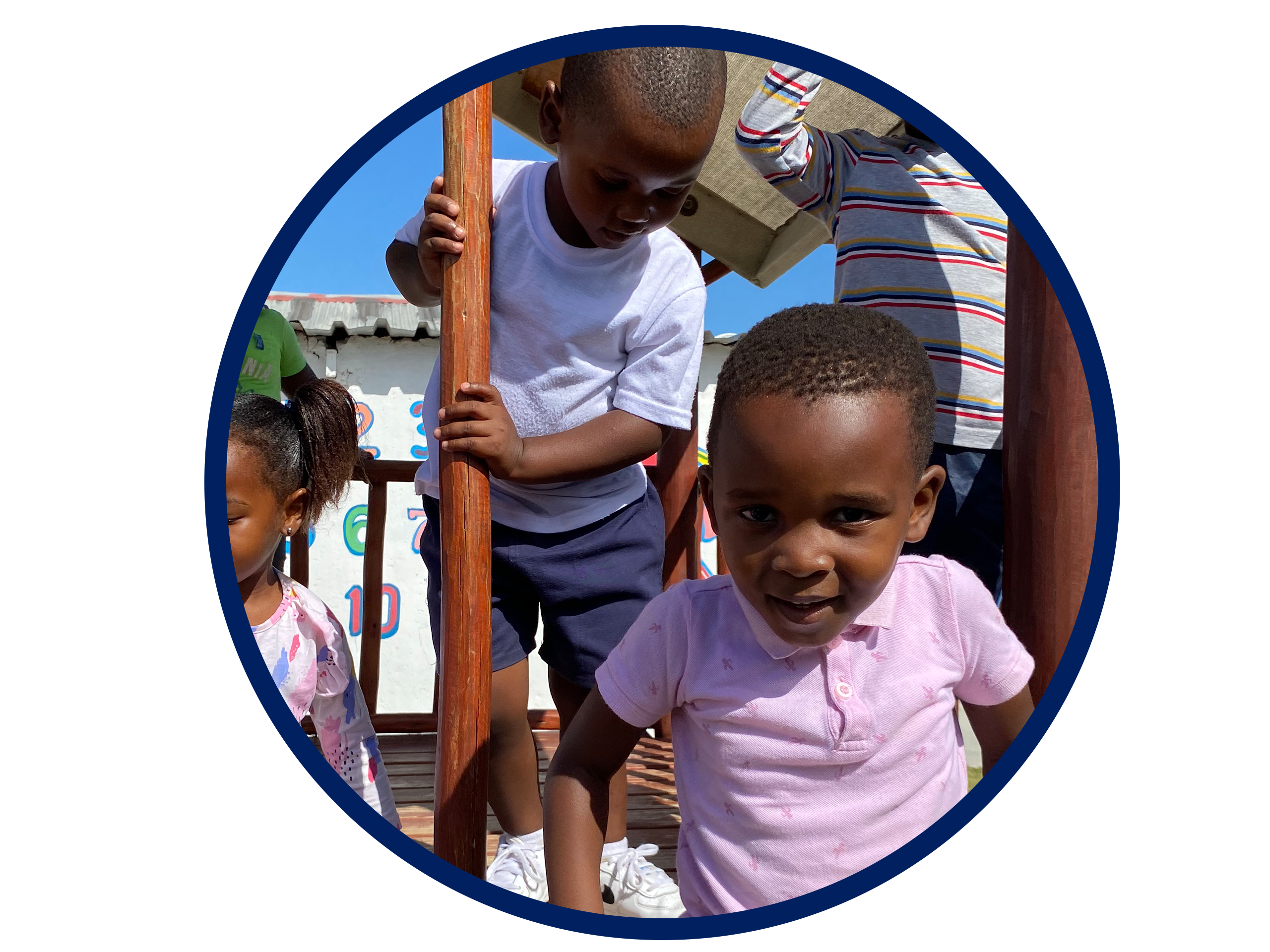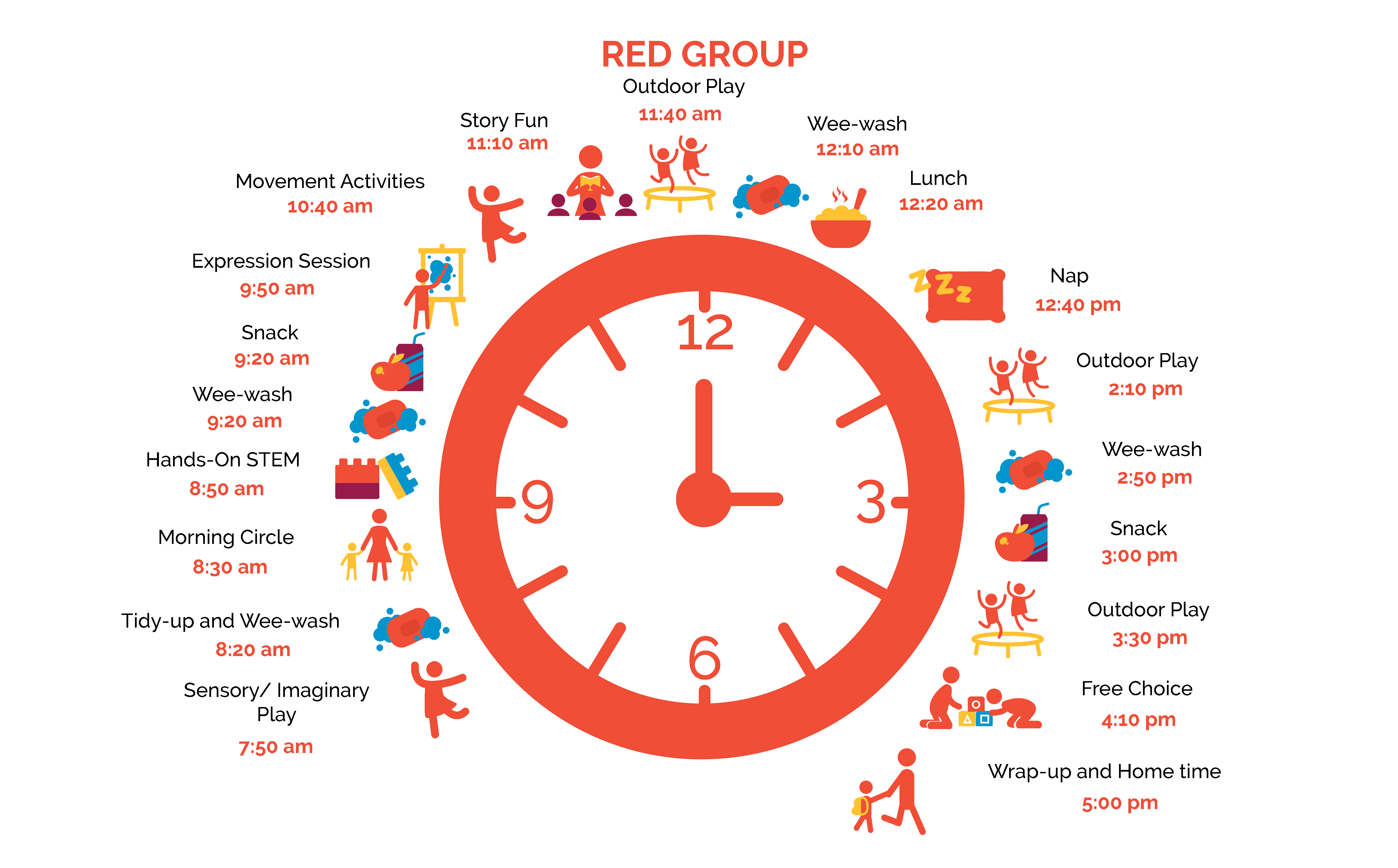
Red Group: Turning Four
Our Red Groupers are learning independence and functioning well within their daily routine, in this year they are sharpening their skills and learning to be cooperative and collaborative learners. Reinforcing friendships and growing emotionally.
Development and Learning Objectives for the Red Group:
Language, Literacy and Creative Expression
Maths and Scientific Reasoning
Physical, Social and Emotional well-being
Language, literacy and creative expression
Creative Expression
1. Engages in music, art and dramatic play
a. Sings along and copies actions during songs
b. Independently makes rhythmic/melodic sounds using found objects and musical instruments
c. Dresses up as / pretends plays in the role of real and fictional characters
d. Uses art materials (such as crayons, paint, play dough etc.) to create representations of real/imagined objects, people, scenes
e. Mimics dance moves of others
f. Creates own dance moves
Oral Language Development
2. Receptive and expressive vocabulary development
a. Learns 3 or more new words per week
b. Uses new vocabulary words in the correct context in phrases/sentences
3. Coherent expression of personal ideas, thoughts, and feelings
a. Strings 3-5 words together to form phrases that make sense and are relevant
b. Expresses a full sentence of thoughts in response to questions directed at them by an adult
c. Successfully engages in meaningful multi-exchange conversations with peers and adults
Emergent Literacy
4. Response to text
a. Role-plays parts of a story or scenario with teacher input
b. Is able to describe events in a story and place them in sequence
c. Makes predictions about characters and events based on illustrations and discussion prompts from the teacher
d. Makes meaningful connections between parts of the story and own experiences or experiences of others
5. Phonological Awareness
a. Chants rhymes emphasize rhyming words and/or pronounces tongue twisters or sentences with alliteration correctly
b. Identifies a sound within a word
c. Compares word lengths
d. Deletes phonemes (say “cat” without the ‘c’ / say a little bit of “running”), identifies common phonemes (do you hear the sound ‘all’ in always? ball? toy?)
e. Swaps phonemes (take away the “l” in front of “look” and put in another sound to make a new word)
6. phoneme-grapheme correspondence
a. Identifies onset sound and letter link for own name
b. Associates sounds with a particular action (e.g. ssslithery snake movement, tongue tttttapper, lip pppoppper)
c. Identifies at least two letters/sound character pairs
Emergent Writing
7. Print awareness/concepts
a. Engages in shared writing activities with adult support
b. Understands that print runs from left to right and top to bottom on a page (directionality)
c. Concept of Word in Text (points to individual words within a written sentence)
8. Tracing, transcription, and writing
a. Accurately traces letters on paper and tablet screen
b. Writes own name independently
Maths and Scientific Reasoning
Quantitative Concepts
9. Estimation
a. Conceptually subitizes (quickly and accurately estimates the number of objects in a group) up to 6
10. Verbal and object counting
a. Keeps one-to-one correspondence between counting words and objects (can answer a “how many?” question up to 10)
b. Keeps one-to-one correspondence between counting words and objects (can answer a “how many?” question up to 20)
c. Counts correctly across different arrangements keep track of objects not counted, understands ‘one more’ as after and ‘one less’ as before
11. Numeral recognition, depiction, and cardinality
a. Numeral depiction up to 10
b. Numeral recognition up to 20
c. Numeral depiction up to 20
d. Explicit understanding of cardinality (how numerals symbols quantity)
12. Relative magnitude and Measurement
a. Indicates the relative length of two objects (longer/shorter
b. Indicates relative magnitude of two quantities (more/less)
c. Indicates relative magnitude of three quantities (most/middle/least)
Geometry and Spatial Relationships
13. Shape recognition and manipulation
a. Identifies kites, semi-circles, pentagons, hexagons and parallelogram
b. Manipulates shapes to form composite pictures such as houses, cars, people and animals
14. Position, Directions and Time
a. Differentiates between, ‘first’, ‘second’, ‘third’, ‘at the front’, ‘in the middle’, ‘at the end’ of a row of items
b. Demonstrates an understanding of ‘to the left of’, ‘to the right of’
Reasoning
15. Classification and Patterning
a. Identifies and continues a-b-a-b style patterns
b. Identifies and continues a-bb-a-bb-a and abc-abc-abc and ab-ac-ab-ac style patterns
16. Planning
a. Routinely describes an action plan prior to and during morning free choice activities
b. Explains reasons for changes in plan during morning free choice activities or reflection during morning circle
17. Hypothesis Formation
a. Asks questions about observed objects and happenings (phenomena)
b. Comes up with ideas for the possible causes of observed phenomena with prompting/support
c. Independently creates hypotheses for causes of observed phenomena
pHysical and social emotional wellbeing
Social Emotional Development
18. Self-regulation
a. Practices sharing and cooperates with peers during group activities
b. Describes own feelings and possible sources
c. Identifies the feelings of others and possible sources
d. Describes emotional and other consequences of negative behaviors
e. Describes motivation behind own actions
Response to expectations
a. Listens to and follows reasonable direct requests from teacher
b. Is aware of (i.e. can describe) classroom routines and behavioral norms
c. Willingly participates in classroom routines and generally adheres to classroom behavioral norms, with occasional reminders from the teacher
20. The positive sense of self and cultural identity
a. Describes personal preferences (what do you like?)
b. Describes personal attributes and strengths (what are you good at?)
c. Displays the beginnings of a sense of identity as a ‘situated self’ influenced by cultural, geographic and familial factors
21. Persistence in the face of challenges
a. Displays willingness to attempt new tasks with support/prompting (doesn’t always return to the same toy/game)
b. Engages in tasks above comfort level without prompting and seeks support when necessary
c. Seeks out new and challenging tasks and independently tries and number of approaches toward challenges before seeking support
Physical Development
22. Gross motor coordination
a. Throws a bean bag/ball towards intended target
b. Catches a bean bag/ball two-handed
c. Kicks a ball towards intended target
d. Catches a bean bag/ball one-handed
e. Hops or balances on one-foot
f. Runs for at least 20 meters
23. Fine motor coordination
a. Finger thumb opposition (touches thumb to all other fingers one at a time)
b. Navigates touchscreen of a tablet with swipes and taps
c. Holds crayons or paintbrushes to draw or paint effectively
d. Uses scissors to cut simple paper shapes
d. Holds pencil with a three-point grip to write letter-like lines and shapes
e. Ties shoelaces independently
Red Group Daily Routine

Special supports for Red Group children and families:
- Developing logic and reasoning skills
- Getting ready for Grade-R